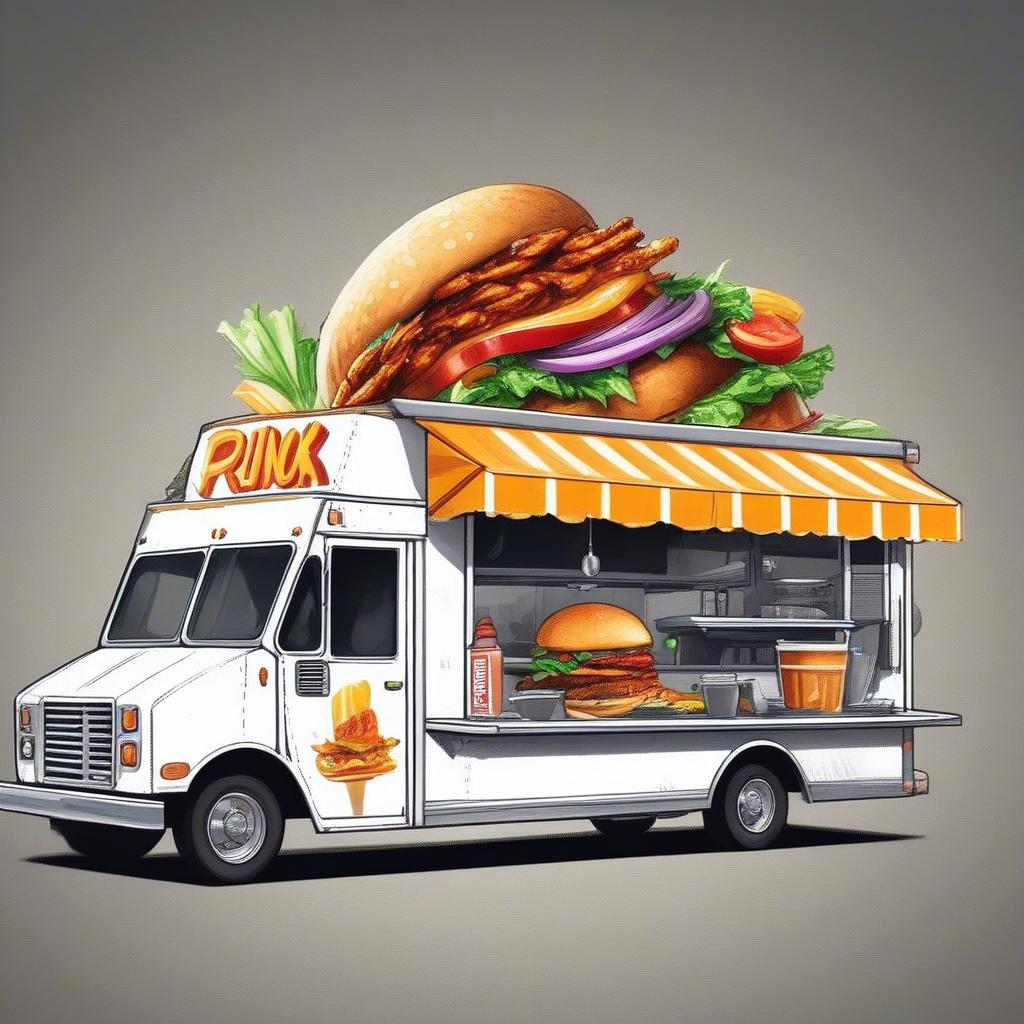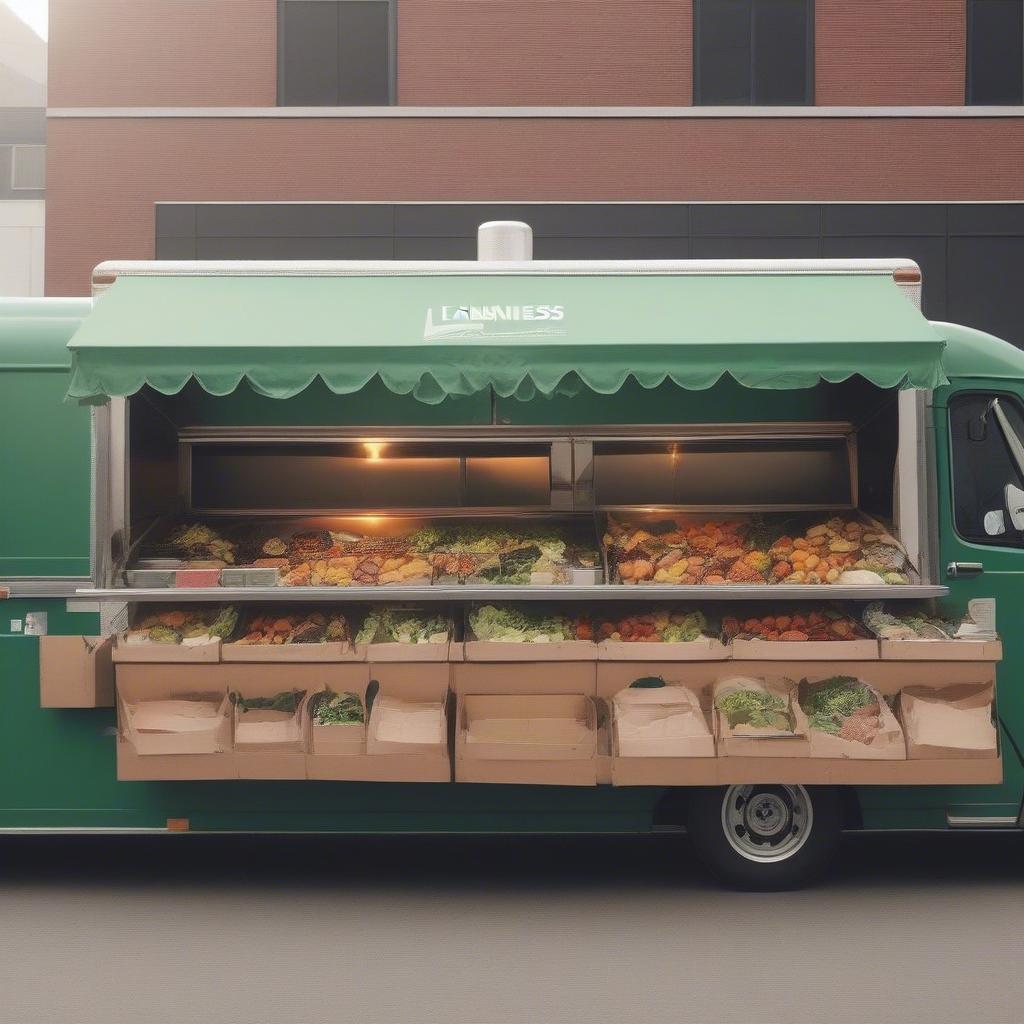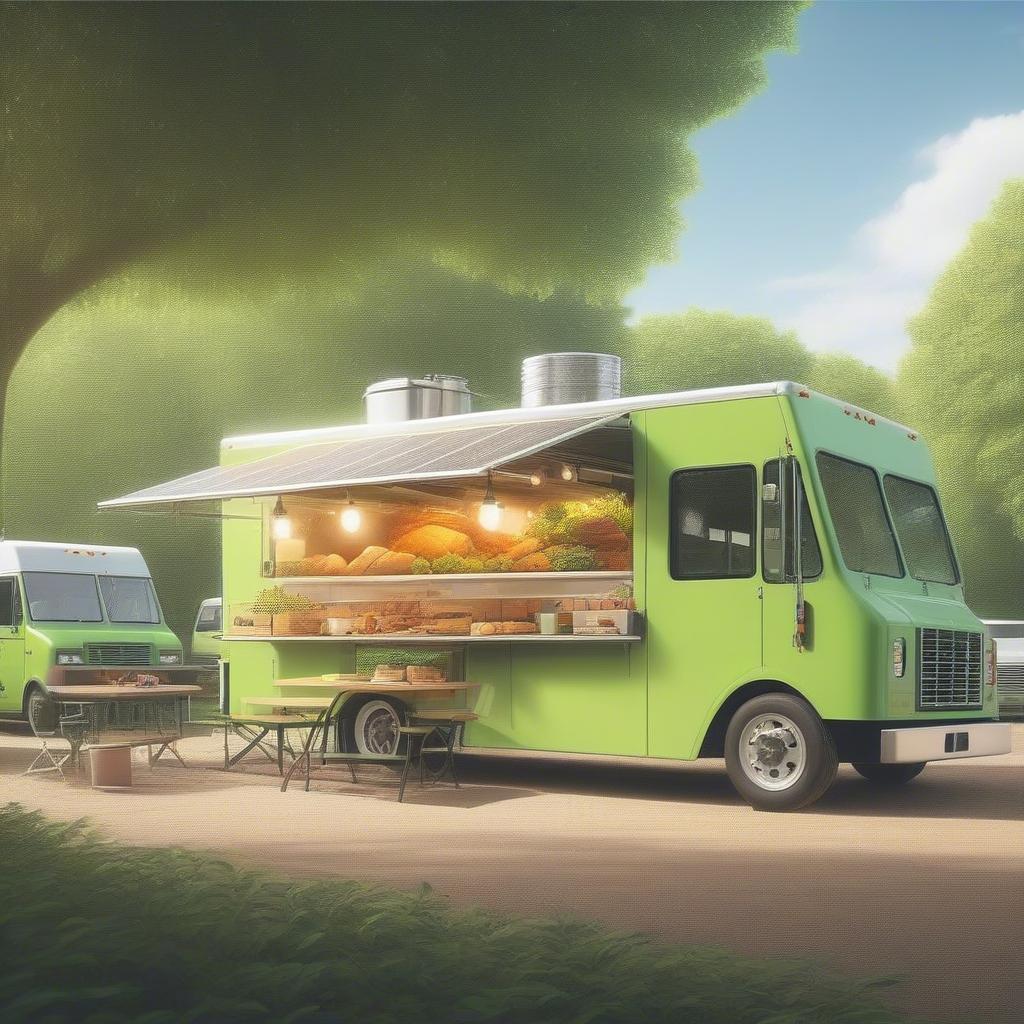
The Secret Sauce to Food Truck Success: Mastering Menu Pricing
Figuring out how to price your food truck menu can feel like navigating a culinary labyrinth. It’s not just about picking a number; it’s about finding that sweet spot where you attract hungry customers and keep your business thriving. Nail it, and you’ll be cooking up profits. Mess it up, and your delicious creations might just be costing you money. This guide will unveil 5 key strategies to help you set profitable pricing and ensure your food truck is a smashing success.
Why is Menu Pricing So Crucial for a Food Truck?
Before we dive into the “how,” let’s address the “why.” Smart menu pricing isn’t just a random act; it’s the foundation of your food truck’s financial health.
- Profitability: The obvious one. If your prices are too low, you’ll struggle to cover your costs, let alone make a profit. If they are too high, customers might look elsewhere.
- Customer Perception: Price influences how people perceive your food quality and value. You want them to feel like they’re getting a great deal for something tasty and worth every penny.
- Competitive Advantage: Strategic pricing can set you apart from other food trucks. It can be a tool to attract customers, whether through perceived value or premium positioning.
- Sustainability: Proper food truck tips on pricing ensure that your business can not only survive but also grow. It allows you to reinvest in your truck, ingredients, and even hire staff.
- Business Stability: Understanding your pricing needs empowers you to make informed decisions about your costs, revenue, and business goals.
Tip 1: Unveiling Your True Costs: The Foundation of Profitable Pricing
Before even thinking about prices, you must know exactly how much it costs you to make each dish. This isn’t just about the cost of ingredients; it’s about a complete cost analysis.
1.1: Calculating Food Costs (Your Plate’s DNA)
- Raw Ingredients: The cost of every single ingredient that goes into each dish (down to the spices!). Keep a detailed record and constantly update them as prices fluctuate. For instance, a breakdown of a gourmet burger might include the cost of the ground beef, the bun, lettuce, tomato, cheese, and any special sauce ingredients.
- Portion Sizes: Be precise with portion sizes. A little extra here and there can quickly eat into your profits. Consistent portioning is key to accurate cost calculations. For example, if a recipe calls for a 4-ounce portion of chicken breast, make sure every portion is precisely 4 ounces.
- Waste: Account for food waste (spoilage, trimmings, etc.). Even with the best practices, some waste is inevitable. Build this into your calculations. Start tracking your waste per dish to understand where you might be overbuying or over-portioning.
- Cost Per Serving: Finally, total up the costs of each component, including wastage, to determine the cost of creating just one serving of your food.
1.2: Beyond Ingredients: Operational Costs (The Engine of Your Truck)
- Labor Costs: How much are you paying your staff (including yourself!), and how does that break down per dish? Don’t forget taxes, benefits, or any other expenses related to labor. Consider how long it takes to prepare and cook each menu item and if your staff is efficient.
- Packaging & Disposables: The cost of napkins, containers, cutlery, and any other disposables you use. These may seem minor, but they add up fast. Look for ways to reduce costs without affecting the quality of the experience.
- Fuel & Utilities: The fuel for your truck, propane, electricity and other associated costs for running the truck. These often fluctuate so keep a close eye on them to understand how it will affect your bottom line.
- Licenses & Permits: All the costs associated with your operating permits and licenses. These costs can be significant initially but are a fixed cost in the long run.
- Insurance Costs: The cost of insuring your food truck, as well as any liability insurance. It’s crucial for protecting your business.
- Marketing & Advertising: Any costs incurred in letting your customers know you exist such as social media ads, flyers, or website development.
- Depreciation & Maintenance: The slow decline in value of your equipment, and the cost of keeping it all in good working order. This is an important cost that is often forgotten.
1.3: Using a Cost Template (Organized Chaos)
To simplify all this, create a spreadsheet or use a digital template. Here’s a basic example:
| Item | Ingredients Cost | Portion Size | Waste Factor | Total Food Cost | Labor Cost | Packaging Cost | Overhead Costs | Total Cost Per Dish |
|---|---|---|---|---|---|---|---|---|
| Gourmet Burger | $4.50 | 1 | 10% | $4.95 | $2.00 | $0.75 | $1.00 | $8.70 |
| Street Tacos (Set of 2) | $2.00 | 2 | 5% | $2.10 | $1.50 | $0.50 | $0.75 | $4.85 |
| Loaded Fries | $2.50 | 1 | 5% | $2.63 | $1.50 | $0.60 | $0.90 | $5.63 |
- Key Takeaway: Track all these costs meticulously. Your pricing strategy depends entirely on knowing your true costs.
- Pro Tip: Regularly review your costs. Prices of goods fluctuate, and so should your cost calculation.
Tip 2: The Art of Pricing Strategies: Finding Your Sweet Spot
Now that you know your costs, let’s discuss pricing strategies. There’s no one-size-fits-all, so choose what works best for your food truck and target audience.
2.1: Cost-Plus Pricing (The Simple Approach)
- How It Works: You add a fixed markup percentage to your total cost per dish. For example, if your burger costs $8.70 and you want a 30% markup, you would charge $11.31.
- Pros: Easy to calculate, guarantees a profit margin.
- Cons: Doesn’t consider market prices or customer value perceptions. You could be over or underpricing compared to your competition.
2.2: Value-Based Pricing (Understanding the Customer’s Mind)
- How It Works: You price your items based on the perceived value of your food to the customer. It’s not just about costs but also about the unique quality, flavors, and overall experience you offer. If your ingredients are organic, locally sourced or your dishes are unique, customers may be willing to pay a higher price.
- Pros: Allows for higher profit margins, helps build a premium brand.
- Cons: Requires an understanding of customer perception and willingness to pay. It can be subjective.
2.3: Competitive Pricing (Keep Your Eye on the Competition)
- How It Works: You research your competitors and price your items accordingly, either slightly below, at par, or above their prices. If you’re a new food truck, pricing slightly below the competition might help you attract customers. If you’ve got a well-established brand, your prices might be above.
- Pros: Helps you stay relevant in the market, attracts customers.
- Cons: May lead to a price war, might not account for your unique costs and value.
2.4: Psychological Pricing (Playing with Perception)
How It Works: You use pricing techniques to influence customer perception and encourage sales. Examples include:
- Charm Pricing: Ending prices in .99 (e.g., $9.99 instead of $10) to make them seem lower.
- Bundle Pricing: Offering meal deals or combos at a slightly lower price to make customers feel like they’re getting more for their money.
- Odd-Even Pricing: Using odd numbers (e.g., $5.95) to create an impression of value.
Pros: Can increase sales, makes prices seem more attractive.
Cons: Can appear gimmicky, might not be suitable for all brands.
2.5: Dynamic Pricing (Flexibility is King)
How It Works: You adjust prices based on demand, time of day, and other factors. For example, you might offer a happy hour discount during slower times or slightly increase prices during peak hours.
Pros: Maximizes revenue, optimizes for peak times, and increases customer flow during off-peak times.
Cons: Requires monitoring the market and being able to adjust prices in real-time and it can potentially annoy customers if the fluctuation is too drastic.
Key Takeaway: Don’t be afraid to experiment with these pricing strategies to find what resonates best with your customers and your food truck’s objectives.
- Pro Tip: Combine strategies for the best results. For example, use value-based pricing with a dash of charm pricing.
Tip 3: Building Your Menu: Layout and Structure
Pricing isn’t just about numbers; it’s also about how you present them on your menu. A well-designed menu can influence what people order, and in turn, affect your revenue.
3.1: Clarity is Key (No Jargon, Please)
- Easy to Read: Use clear and legible fonts. Your menu should be easy to read at a glance.
- Simple Language: Avoid complicated culinary jargon. Use language that your customers can easily understand.
- Descriptive: Use descriptive and enticing language to make your dishes sound irresistible. Instead of “Chicken Sandwich”, you could write “Grilled Lemon Herb Chicken Sandwich on toasted brioche”.
- Visible Prices: Make sure your prices are clearly displayed alongside each item. Don’t try to hide them; that will just frustrate customers.
3.2: The Power of Menu Engineering (Strategic Placement)
- Highlight Profit Makers: Position your most profitable items in the most noticeable areas of your menu, usually at the top or in the center.
- Minimize Unprofitable Items: Place less profitable items in less visible locations on your menu.
- Use Boxes and Callouts: Create boxes or use callouts to draw attention to specific items such as your specials or meal deals.
- Strategic Grouping: Group items logically. This can help customers make informed decisions and encourage them to buy more.
3.3: Menu Variety (Something for Everyone)
- Core Items: Include a few core items that are your best sellers. This will create consistency and familiarity for your customers.
- Specialty Items: Introduce specialty items to keep your menu fresh and exciting. This can cater to different tastes and preferences.
- Seasonal Items: Take advantage of seasonal ingredients to create limited-time specials. This adds variety and encourages repeat visits.
- Options: Offer different options within each category to allow different price points for different budgets.
- Dietary Needs: Consider offering vegetarian, vegan, or gluten-free options to cater to different dietary needs.
3.4: Menu Design (A Visual Feast)
Keep it Simple: A cluttered menu can be overwhelming. Keep it clean, organized, and visually appealing.
Brand Representation: Your menu design should reflect your food truck’s branding. This helps with brand recognition and consistency.
Use Visuals: Include photos of your most appealing dishes, but don’t overdo it. Too many pictures can look cluttered.
Digital vs. Physical: Consider both digital menus (displayed on a screen) and physical menus. A digital menu is more dynamic and easy to update. A physical menu offers a tangible experience.
Key Takeaway: Your menu is a powerful tool that can be used to not only showcase your food but also strategically guide customer orders and revenue.
- Pro Tip: Regularly review and update your menu based on your customer feedback, best sellers and seasonal changes.
Tip 4: Testing and Iterating: The Road to Perfection
Pricing is not a “set it and forget it” process. You must constantly test and refine your prices to find that perfect balance.
4.1: Customer Feedback (Your Most Valuable Data)
- Surveys & Polls: Ask your customers for feedback on your prices and menu items. This can help you understand their perceptions and identify any areas for improvement.
- Comment Cards: Keep comment cards readily available for customers. This gives them an easy way to provide you with their opinions.
- Social Media: Monitor your social media pages for mentions, comments, and reviews. This will allow you to track how people are perceiving your prices and food.
- Direct Interactions: Talk to your customers face-to-face to get real-time feedback. This allows you to get a deeper understanding of their feelings towards your food and price.
4.2: Tracking Sales Data (Numbers Don’t Lie)
- Sales Reports: Use your point of sale (POS) system to track which items are selling well and which ones are not. This will help you make informed decisions about your menu pricing.
- Cost of Goods Sold (COGS): Regularly compare your actual costs to your projected costs. This will allow you to spot any areas where you’re spending too much.
- Profit Margins: Monitor your profit margins for each menu item. This will allow you to optimize your menu prices.
- Peak Hours: Identify your peak hours and consider adjusting prices to maximize profits.
4.3: A/B Testing (The Scientific Approach)
Minor Adjustments: Test small price changes on different items. Don’t make drastic price adjustments all at once. Track how these adjustments affect your sales.
Menu Variations: Try different menu layouts and designs. See what works best in terms of sales and customer engagement.
Promotional Offers: Try different promotional offers such as discounts, bundle deals, and happy hour specials. This will allow you to test out how these promotions will impact your sales.
Continuous Improvement: Be willing to tweak your menu and prices based on your testing results. Always be open to improving your menu and pricing structure.
Key Takeaway: Pricing is an ongoing process. Be flexible and constantly iterate your pricing strategy based on customer feedback and data.
- Pro Tip: Set aside regular times to review your sales, customer feedback, and overall menu performance.
Tip 5: Learn Business: Your Secret Weapon for Business Growth
Navigating the world of food trucks is challenging. That is where Learn Business comes in. We’re not just another business resource; we’re your partner in success.
5.1: Customized Guidance
We understand that every food truck is unique, with its own challenges and goals. We offer personalized guidance tailored to your specific needs. This isn’t generic advice; it’s customized support designed to drive your success.
5.2: Expertly Crafted Templates
From detailed financial models to comprehensive marketing plans, Learn Business provides templates that are easy to use and designed by experts. These templates can help you track your costs, manage your inventory, and develop effective marketing strategies, all things that will affect your menu pricing strategy.
5.3: Actionable Insights
Our guidance is designed to be practical and actionable. We don’t just tell you what to do; we show you how to do it. We aim to empower you with the tools and knowledge you need to make informed decisions and grow your business.
5.4: Support for Your Journey
We’re not just here to help you get started; we’re here to support you throughout your business journey. Whether you’re just starting out, or are a seasoned veteran, Learn Business offers advice, tips and strategies to help you achieve your financial goals.
5.5: How Learn Business Helps with Menu Pricing
Cost Analysis Tools: Easily track and calculate your costs, ensuring that your prices are always profitable.
Pricing Strategy Templates: Implement the best pricing strategies that are unique to your business needs.
Menu Design Resources: Create compelling and effective menus that drive sales and boost revenue.
Financial Planning Guides: Make informed decisions with our financial planning guides so that you always have your finger on your business’s financial pulse.
Key Takeaway: Learn Business provides the support and resources you need to master menu pricing and achieve sustainable success in your food truck business.
- Pro Tip: Check out our resources today and get access to our tools and templates to help your business thrive.
Conclusion: The Road to Profitable Pricing
Pricing your food truck menu is both an art and a science. It requires a deep understanding of your costs, your customers, and your market. By following these food truck tips and using a combination of pricing strategies, you can ensure that your business not only survives but thrives. Remember to be flexible, experiment with different pricing options, and always seek feedback. With the right approach, you can set profitable pricing and create a food truck that customers love and that keeps them coming back for more. Learn Business is your ally in this journey, offering the tools and guidance you need to succeed. Don’t just sell food; build a thriving business that stands the test of time.



Leave a Reply